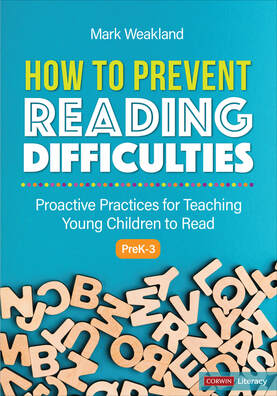|
The interaction of meaning, sound, and spelling is what gives rise to foundational to reading. From researchers and writers such as Linnea Ehri, Mark Seidenberg, David Share, Gene Ouellette, and Louisa Moats, we know that becoming aware of the individual sounds in words (phonemes) is critical to the development of orthographic mapping –the brain process of associating letters with sounds that ultimately leads to the automatic recognition of a word’s spelling, meaning, and pronunciation. Without well-developed orthographic mapping, children (and adults) will struggle to develop fluent reading and writing. So, how do we best set our young students on the path of phonemic awareness ? In his excellent 2015 Reading Teacher article on early literacy research, D. Ray Reutzel identified phonemic segmentation as an activity that gives a lot of bang for buck. To be clear, he still encouraged the teaching of onset-rime, rhyming, and alliteration. But he did emphasize segmenting, a somewhat advanced phonemic skill. So, let’s look at ways to teach the discrimination, segmentation, and blending of phonemes, thus moving students towards the ultimate goal of advanced phonemic awareness. Stretch the Word When we speak, their individual sounds of words are blended together (co-articulated), making it difficult to hear where one sound begins and the other ends. Plus, oral language goes by very quickly. To help students hear sounds within words, teach them to slow down the speaking of word so they can hear the phonemes within each one. Later they can segment those phonemes more discretely through activities like Tapping and Zapping (more on this in a minute). To stretch a word, tell your students to pretend the word is a big rubber band. If you live in western Pennsylvania, ask them to imagine a “gum band.” They’ll know what you mean. Grab hold of either end of the word (make two fists and hold them close to each other in front of you). Then slowly pull your hands away from each other, stretching the word out, holding out the vocalization of each phoneme as you stretch. After the rubber band is stretched as far as it can go and all of the phonemes have been drawn out, snap the band back together with a handclap. When students clap, they say the word. In this way, phonemes are blended back together to make a word. Words with continuant sounds in the beginning are best for beginners so choose your words carefully. For example, flip is a good word to start with. It’s stretching and blending would sound like this: ffff-llll-iiii-p, (clap) flip! To build vocabulary, go beyond common words. For example, when having students phonemically segment closed syllable words, use vast as well as big and dash as well as run. Quickly and effectively define these words for children through direct and explicit instruction. Tapping and Zapping: Using fingers to segment sounds Stretching a word helps students hear the individual sounds within words. Tapping and Zapping take the ability to the next level – isolating or segmenting those sounds. Tapping involves extending your non-dominant arm and then using three fingers on your dominant hand to tap out the individual sounds of a word along your arm, starting up near your shoulder and working towards your wrist. Fish would get three taps (/f/, /i/, /sh/) and flip would get four (/f/, /l/, /i/, /p/). Once the tapping is done, go back to the shoulder and slide your hand down your arm, shoulder to wrist, blending the sounds back together as you say the word. To model zapping, say the target word as you make a fist. Next, segment the word into the sounds you hear, pumping your hand and throwing out a finger for each sound you say. For example, the word it gets two pumps. The index finger comes out when you say /i/. The middle finger comes out when you say /t/. Finally, draw your fingers back into a fist, blending the sounds together, and saying the word. When giving words, it is important for you to say the word and have your students repeat it with you (I Say, We Say) before the zapping begins. I Say, We Say gives a model of the correct pronunciation of the word prior to sound segmentation and an opportunity to repeat that correct pronunciation. After all, one cannot segment phonemes correctly if the word isn’t pronounced correctly. Hear It, Say It, Zap It, Blend It Here’s a teaching routine I still run in classrooms. If I use six or seven words, it takes about five minutes. In this routine, keep your instruction direct and explicit, use modeling, and proceed at a brisk pace. The point is to work in lots of practice so the kids can master the technique. Once mastered, children can use zapping as an independent strategy for spelling and reading many unknown monosyllabic words. In this lesson, we’ll imagine the teacher is working with a group of second graders on the r-controlled syllable.
Stretch It, Tap It, Zap It With short bursts of repeated practice distributed over time, students can master the art of stretching, tapping, and zapping in just a few weeks. Combine all three – stretching, tapping, zapping - into short routine. Click this link to see me demonstrating Stretch It, Tap It, Zap It. And the pics below show a friend, who appears in my recent book, doing the same. In an upcoming post, developing advanced phonemic awareness While segmenting and blending are necessary skills, they are only somewhat advanced. To increase the chances students will develop strong orthographic mapping, we want to move students farther down the phonological bookshelf to truly advanced phonemic skills: subtracting adding, and moving phonemes to make new spoken words from old ones. In an upcoming blog, I’ll give activities that develop the most advanced phonemic skills. Sources / Citations
 By the Way The activities described in this blog (as well as many others) can be found in my new book from Corwin! |
Mark WeaklandI am a teacher, literacy consultant, author, musician, nature lover, and life long learner.
|

 RSS Feed
RSS Feed